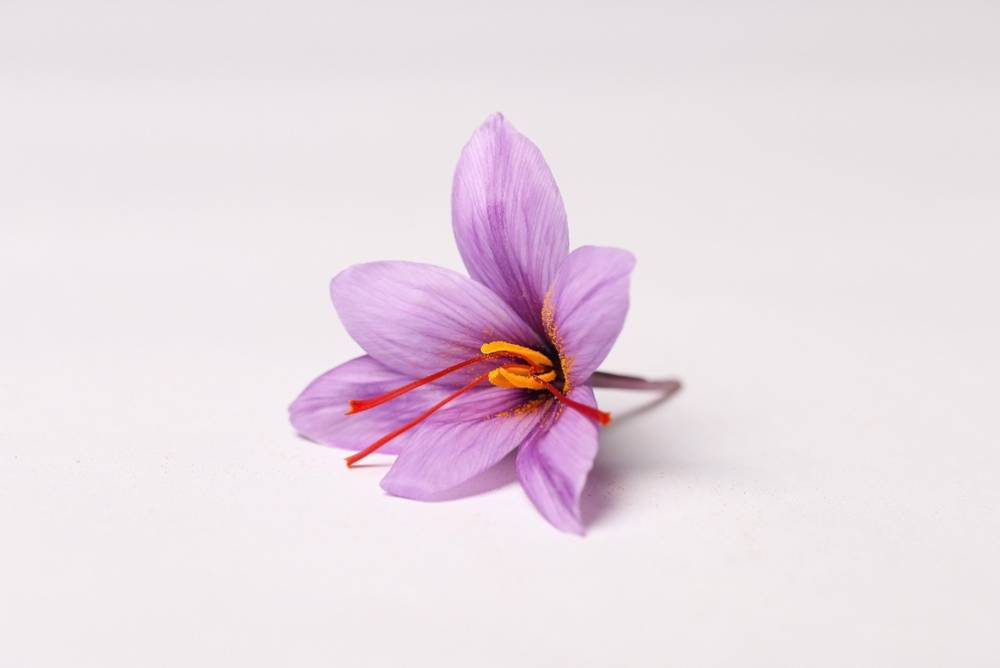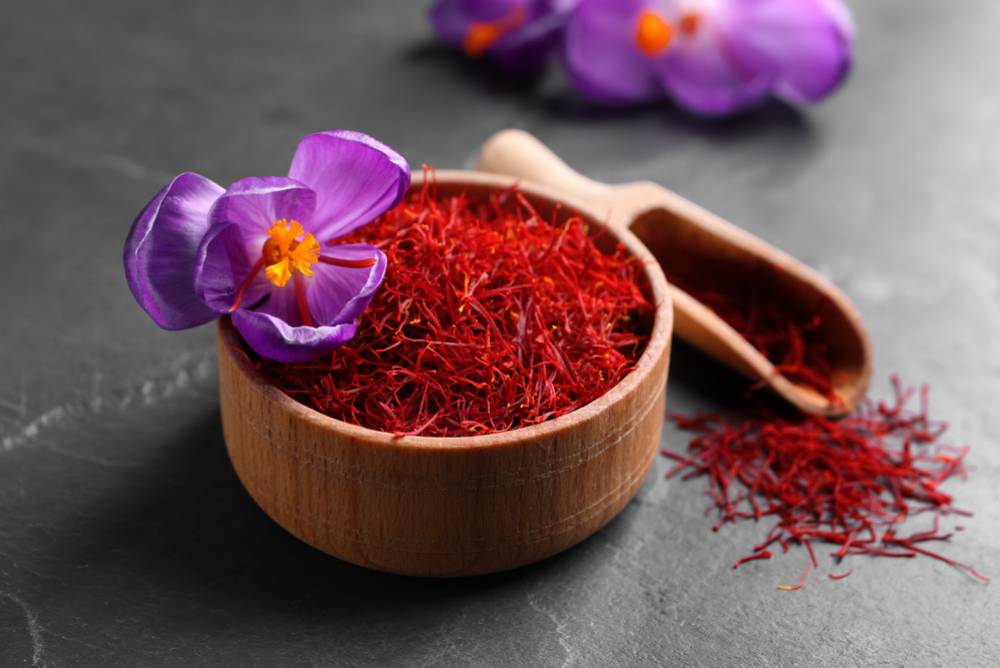![]() FREE EUROPE SHIPPING
FREE EUROPE SHIPPING ![]()

SAFRANEE 1 gr

SAFRANEE 2 gr

SAFRANEE 5 gr
Unveiling the Power of Saffron: A Comprehensive Guide to the World’s Most Expensive Spice
- June 29, 2023
- Reading Time 9 minutes
Renowned globally for its distinctive color, flavor, and medicinal properties, saffron stands as one of the most valuable spices in the world. This versatile spice, a key player among the top 14 herbs of the Bible, continues to reveal new potential benefits for the heart, mind, and overall health.
Understanding Saffron
The saffron plant, scientifically known as Crocus sativus, belongs to the Iridaceae family, which also includes irises. This perennial plant grows from a bulb and blooms in the fall. The culinary spice we know and love is derived from the stigma of the saffron flower, which is separated and dried.
The dried stigmas are highly valued in various industries, including cosmetics, pharmaceutics, and textile-dye, not to mention their significant role in cooking. Despite the saffron flower’s purple hue, the spice itself boasts a vibrant red color.
What makes this spice so special? It takes a staggering 75,000–125,000 flowers to produce just one pound of saffron. The labor-intensive process of growing and harvesting saffron contributes to its high price, with a single pound costing up to $5,000, earning it the title of the world’s most expensive spice.
Origins and Global Presence of Saffron
Native to Southern Europe, saffron has spread its roots across the globe, growing on every continent except Antarctica. The largest producer of saffron today is Iran, although the best saffron in the world is a topic of ongoing debate.
Historically, saffron has been used for various medicinal purposes. Egyptian healers utilized it to treat gastrointestinal ailments, while during Roman times, it was used to promote wound healing and relieve upper respiratory complaints. Other traditional uses of saffron include treatment of spasms, fever, colds, bronchitis, and insomnia. In Ayurvedic medicine, it was used as an expectorant, sedative, anti-asthma herb, and in various opioid preparations for pain relief.

Health Benefits of Saffron
Today, the benefits of saffron extend far beyond its culinary uses. Let’s explore some of the key health benefits of this precious spice:
1. Boosts Cardiovascular Health
Studies suggest that saffron may promote a healthy cardiovascular system. Heat shock proteins (HSPs) 27, 60, and 70, which are significantly linked to metabolic syndrome and atherosclerosis, have been shown to decrease greatly in the presence of saffron.
2. Helps Erectile Dysfunction
Erectile dysfunction (ED) affects more than 150 million males worldwide. Saffron, known as an aphrodisiac in traditional medicine, has shown promise in improving erectile function. Its chemical compound, crocin, is credited for this aphrodisiac activity.
3. Possesses Potential Anti-Cancer Effects
Saffron is recognized for its anti-cancer capabilities, making it a potential natural cancer treatment. Research suggests that saffron might be beneficial for patients suffering from cancers with liver metastasis.
4. May Alleviate Symptoms of PMS
As an excellent antispasmodic, saffron may alleviate symptoms of Premenstrual Syndrome (PMS), a common health problem affecting 20 to 40 percent of women of reproductive age.
5. Promotes Satiety and Weight loss
Research indicates that saffron may enhance satiety and promote weight loss, potentially aiding in the fight against obesity.
6. Can Improve Anxiety and Depression
Depression is a serious disorder affecting up to 21 percent of the population in some developed countries. Saffron has shown efficacy in the treatment of mild to moderate depression, offering a natural alternative for mental health support.
Nutrition Facts of Saffron
One tablespoon of saffron (approximately 2.1 grams) provides a range of nutrients, including:
- 6.5 calories
- 1.4 grams carbohydrates
- 0.2 gram protein
- 0.1 gram fat
- 0.1 gram fiber
- 0.6 milligram manganese (28 percent DV)
- 1.6 milligrams vitamin C (3 percent DV)
- 5.3 milligrams magnesium (1 percent DV)
- 0.2 milligram iron (1 percent DV)
- 5 milligrams phosphorus (1 percent DV)
- 34.5 milligrams potassium (1 percent DV)
How to Use Saffron
The stigma of the saffron flower, a long, thin stalk within the flower, is the edible part of saffron. It’s available as ground or whole stigmas (threads). For the best quality, opt for saffron threads.
Saffron is highly flavorful and aromatic, with a spicy, pungent, and slightly bitter taste. It’s used in many dishes, including rice dishes, vegetables, meats, seafood, poultry, and baked goods. It adds a sharp, almost medicinal flavor and a beautiful yellow-orange color to the dish. You can also use the threads to make saffron tea.
Risks and Side Effects of Saffron
While saffron is generally safe for most people when taken by mouth as a medicine for up to six weeks, it’s possible to experience side effects such as anxiety, change in appetite, dizziness, drowsiness, dry mouth, nausea, and headache. High doses of saffron are typically unsafe and can cause poisoning. It’s not recommended for pregnant women in amounts larger than what is typically found in food as it may cause the uterus to contract and might lead to a miscarriage.
Final Thoughts
Saffron has been used in traditional medicine for centuries and continues to be a prized spice for medicinal purposes to this day. Its potential health benefits, culinary uses, and unique flavor make it a valuable addition to any kitchen. Whether you’re using it to enhance your dishes or to boost your health, saffron is a spice worth exploring.
Call to Action
Ready to experience the power of saffron? Start incorporating this precious spice into your diet today and reap its numerous health benefits. Remember, a little goes a long way!
Table of Contents
company
STAY UPDATED
Subscribe for weekly recipes, updates, and more.
© 2023 SAFRANÉE. All Rights Reserved.




